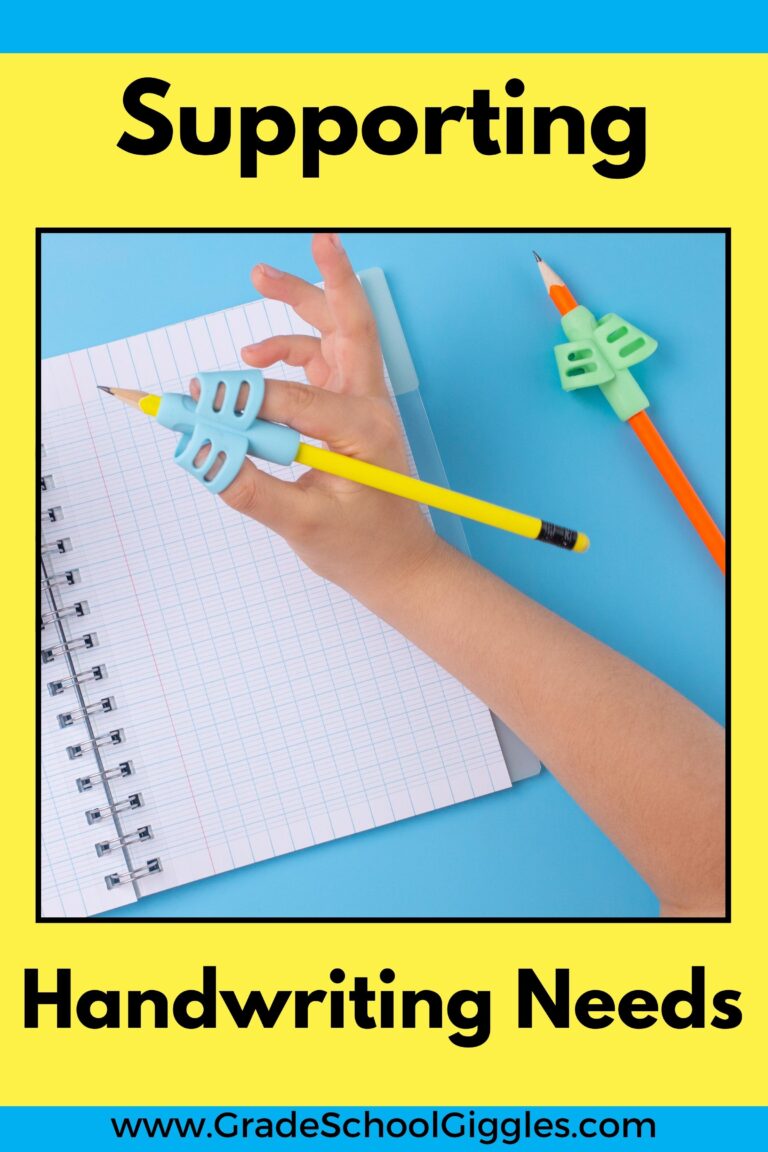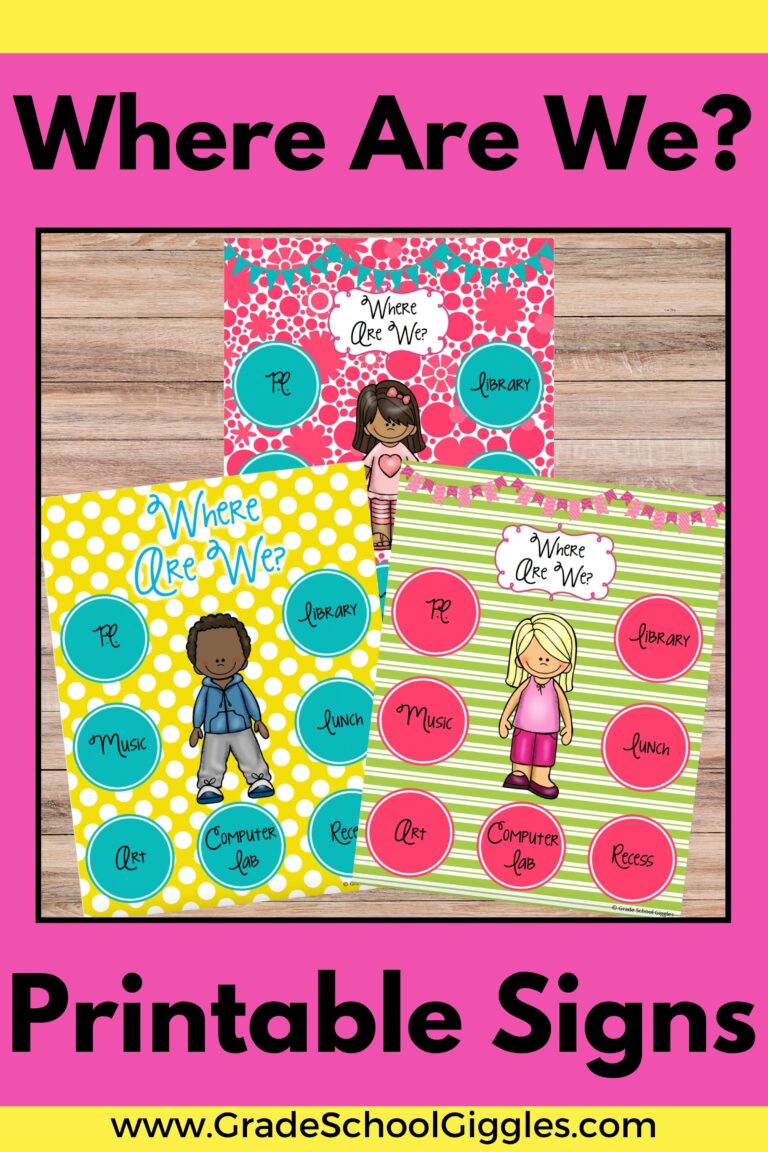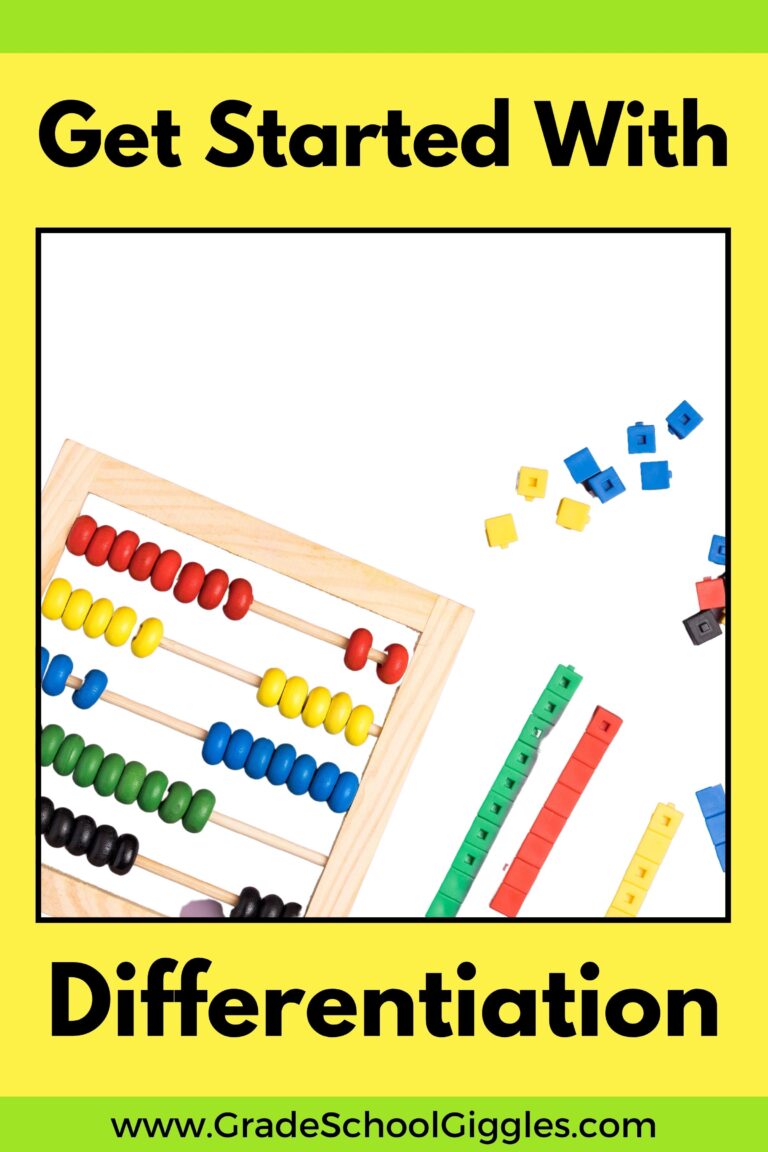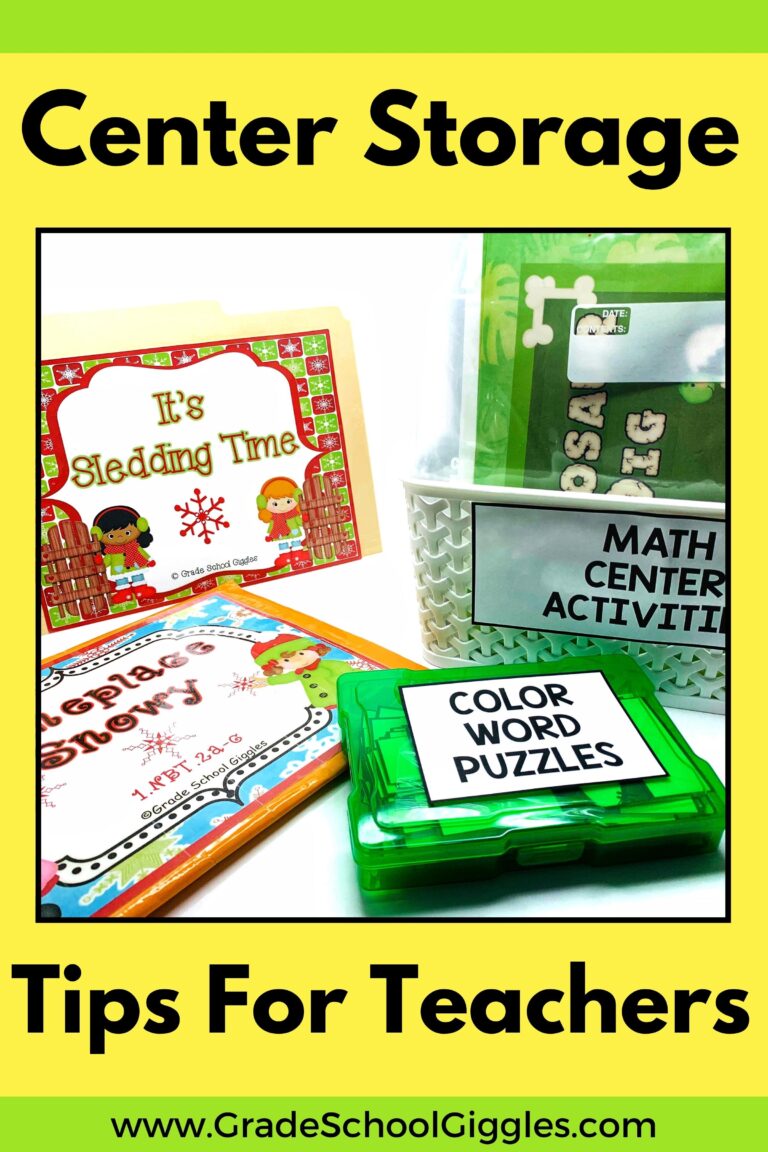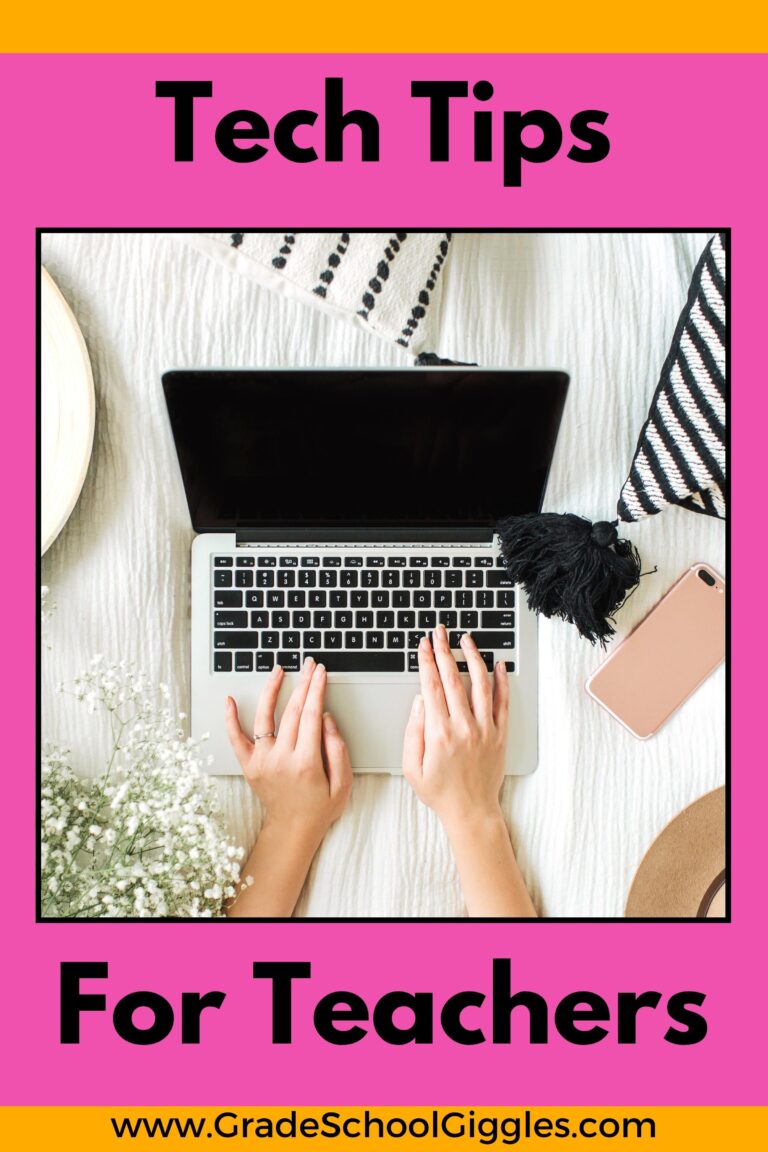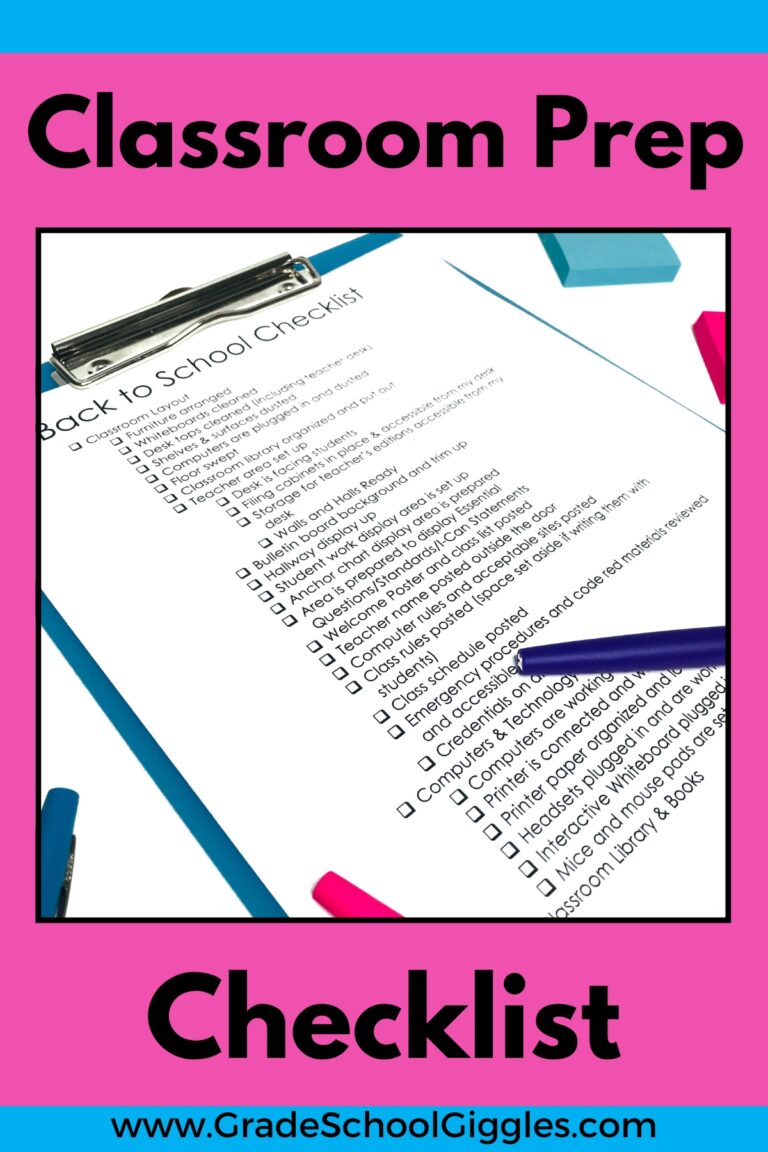Classroom Set Up: 7 Guiding Questions
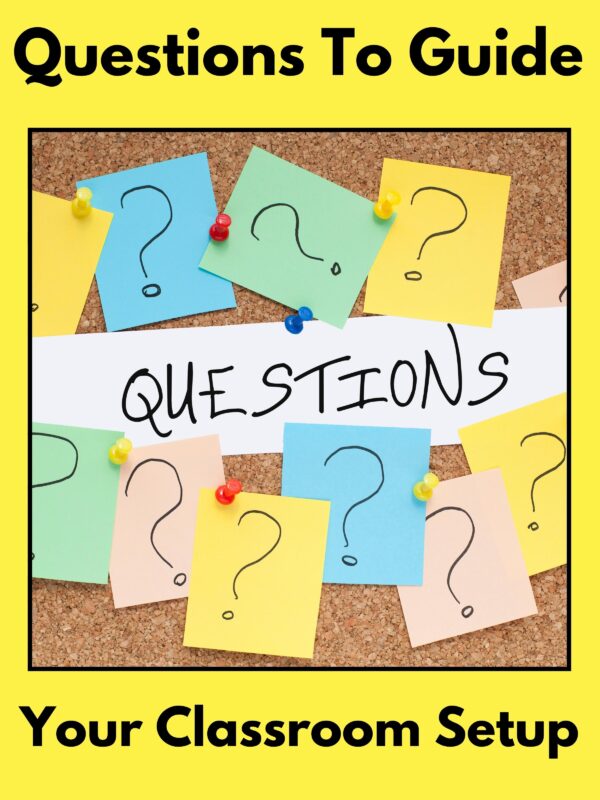
Are you already thinking about next year? Have you been thinking about your classroom setup? It’s easy to get excited and just jump right in. But before you start moving furniture or designing your décor, there are a few questions you should ask yourself. Seriously, thinking about these questions now will make things easier later. Promise! Plus, they’ll give you a great feel for how you want your classroom set up.
How will your students be working?
Let’s start with what’s going to be happening in your classroom. Teaching and learning are given, but how will that be accomplished? Are your kiddos going to be learning as a whole group, in small groups, with partners, or independently?
You’re probably rolling your eyes at me right now and thinking, “Well, duh, they’ll be doing all of that.” So, you’ll want to plan spaces for all of those groupings as you get your classroom set up.
Decide what the main work style will be and start with planning your seating arrangements around that. Then, consider how you’ll accommodate the other work styles.
Maybe you’ll use small group tables. Students could work independently at their seats or on the floor with pillows and clipboards. Or, maybe you prefer to have desks in rows for whole-group and independent work. You could add a few tables or rugs for small group activities. The options are endless, but it pays to think about it sooner rather than later.
What kinds of activities your students will be doing?
You’ve thought about how your students will work. You’ve got a plan to accommodate different groupings. Next up, what kinds of activities are your kids going to be doing?
If you teach using an interactive whiteboard, you’ll need to be sure everyone can see it. You probably won’t want to have students whose seats face away from the board if they are going to be copying from it a lot.
Maybe you want to have a table for small group lessons or a rug for read-alouds. If you have a co-teacher, you might decide to plan areas for two simultaneous small groups or set aside a spot for a parent volunteer to work with kids. Again, different strokes for different folks…There are many ways to set up for all of the activities you’re likely to have happening in your classroom. You get to decide what works for you, but to do that, you’ve got to know how you want your space to function.
Are there safety concerns and behavioral issues to consider?
Some things may need to be determined by safety concerns. Some furniture may need to be up against a wall to prevent tipping or backed up against another piece of furniture. Perhaps, heavier furniture should be bolted to the wall (if possible) or removed from the room if it might tip or if you’re in an earthquake-prone area.
If you have any “runners,” you probably shouldn’t have their seating next to the door. Maybe you’ll want to have your small group table or desk by the door instead.
Another big consideration is sight lines. As much as possible, you want to be able to see every area of your classroom. Don’t create spaces in your room where you can’t easily see.
When my oldest daughter was in preschool, her wonderful teacher learned this lesson the hard way. Three girls had decided to play house in the home living area. There was a mommy, sister, and baby. Sounds great, but here’s the thing. They decided to change the “baby’s” diaper, which the teacher couldn’t see from the small group table. The parents watching on the password-protected webcam could. Awkward! Seriously, you want to keep the sight lines as open as possible.
What physical space limitations need to be taken into consideration?
Some classrooms are small. Some are big. And some are just crazy-shaped spaces. Others don’t have enough outlets. Some have wall-mounted T.V.s or sinks. You know your classroom. So, consider what limitations the physical layout creates.
Maybe you only have one area that desktop computers can fit, or you don’t have enough space for a small group table. Maybe your fire code requires certain clearances from the doors or windows. Whatever the situation is, you might have to get creative. So, it’s a good thing teachers are creative people.
Are supplies and materials easily accessible?
Now that you’ve thought about what your students will be doing, you can think about the materials they will need to use. A kindergarten teacher might not want her students to have glue bottles at their desks. However, a fifth-grade teacher who loves interactive notebooks might.
What supplies do you want your students to have with them all of the time? Are there supplies that belong in certain dedicated areas of the room? Maybe you want certain supplies near centers or near your small group area. Maybe other supplies should be near the board or where you do whole group lessons.
What you want your students to have open access to will likely vary with their age. What they can reach will too. So, consider their height when you plan.
Another thing you might want to consider is what you don’t want them to access. Do you need a locked filing cabinet for confidential records? Maybe you want a dedicated teacher supplies area only for your planning materials or personal stuff.
Also, if you have any students with special needs, you’ll need to plan to accommodate them. Students with wheelchairs or walkers may need wide aisles, open spaces, lowered storage, and tables versus desks. Some students may have special equipment. Students with sensory or emotional needs may need a cool-down area. If you have information about your incoming students, use it to meet their needs from day one.
How will the traffic flow in your classroom?
Traffic jams stink. They don’t just happen on the road, either. Classroom traffic jams happen when too many important supplies are in one spot. Think about what areas kids will need to frequently access and spread them out as much as you can. Create walkways and aisles where you can. Remember, you’re going to need to walk around the room too. Don’t put things so close together that you can’t comfortably walk between the tables and desks.
Will you be comfortable in the space?
Finally, consider yourself. You, as the teacher, set the tone for the classroom. If you’re not comfortable, your students won’t be either. You’ll be spending a L-O-T of time in your classroom. So, spend a little time thinking about what you like and what makes you feel good in a space.
Some teachers never use their desks and love the extra space getting rid of it gives them. Personally, I prefer to have a corner in the back of the room set up with my desk and supplies for planning and prep work.
Some teachers love flexible seating, but others find it drives them crazy. Some teachers are okay with some mess. Others find that even a little mess is distracting.
Some teachers love having a couch or bean bag chairs. Others see them as lice and germ breeders.
Know yourself, know the colors you love, the type of space you work well in, and what’s allowed by your district. (Think mini-fridge, bean bag chairs, lamps, etc.) You’ll enjoy teaching better in a room that makes you feel good than in one you can’t wait to get out of. So keep yourself in mind as you plan your classroom setup.
Now, you’re ready to plan a rockin’ classroom setup.
Personally, I map out my classroom layout before actually moving anything. Why? Because it’s a pain in the rear to move furniture only to have to move it back. Plus, it’s not fair to the custodians to ask them to help move the same heavy furniture a bunch of times.
There are some tech tools to try out classroom layouts. Classroom Architect is one. Or, go old school and create a paper map with a tape measure and some graph paper. A map will help you visualize your classroom set-up.
